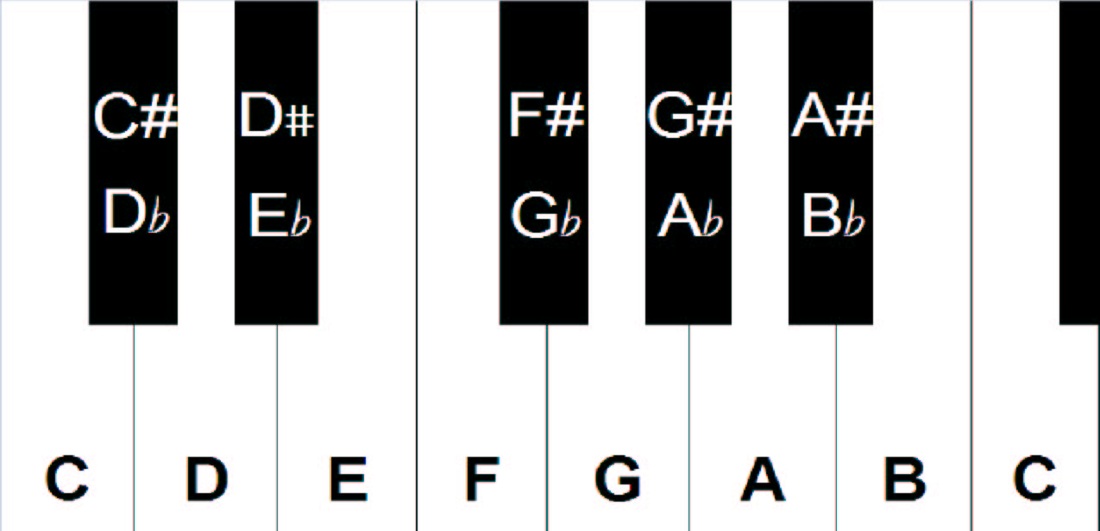

When you play a higher version, the vibration is twice as fast, or four times as fast, and so on. That’s because if you play a low version of that note, you are causing a vibration that is half as fast, or a quarter as fast, or an eight as fast…. If you play any specific note on your piano or keyboard, and then a higher version, they all sound similar. In fact, unless you’re tone deaf you probably can do a pretty cool thing without even trying: hearing when certain notes are just higher or lower versions of themselves.

One of the many awesome things your brain can do is notice similarities between certain sounds and notes. That’s a good thing: too many notes would actually not sound nearly as good! More on Sound Vibrations All instruments have a limit to how much they can vibrate, so that limits what range of notes they can play. So moving “up” aka to the right will always mean higher pitch on your piano keys, and vice versa.Īlthough there really is no theoretical limit on what sounds (aka vibrations) could exist, you’ve probably already realized that there isn’t an infinite number of piano notes or musical notes. The lower piano notes have longer, slower vibrations. The inside of your piano is built so that higher notes have a smaller, faster vibration. If you’ve ever run your fingers across the keys, you can hear the pitch incrementally rising or falling (depending on which direction you’re going). Piano notes run low to high from left to right. No matter what instrument you’re on, steady vibrations are what each note you play is actually made of.

Regardless of how high or low you want your note, maintaining a steady vibration at the right speed is the key to producing a specific note. But slow vibrations mean lower, deeper sounds. If something vibrates fast, it produces a high pitch. So it’s not just a BeeGee’s idea to try and find good vibrations. And the most simple explanation of what notes are? Vibrations that sound good while staying consistently at one pitch. So simply put, all sounds really are just vibrations. Depending on how quickly something is vibrating, the pitch of that sound will change. Those waves are what vibrate your eardrums and tell your brain to interpret them as sounds. If you could see sound, it would look like waves. And that’s what this video is all about: What Is a Note?
PIANO KEYS NOTES HOW TO
It’s a little complicated, but fortunately you don’t need to know too much music theory to understand piano notes and how to use them. You can hear a diminished chord used in this way in the song “God Only Knows” by The Beach Boys.Piano notes: they’re probably the first thing you picture when you think about playing, right? But what are they? What’s the difference between piano notes and just any random sound? The most common use of a diminished chord is to transition between two other, more stable-sounding chords. Are diminished chords used in rock songs?ĭiminished keyboard chords are less common than major and minor chords, but are still frequently used in rock and pop songs. To find the notes of a diminished chord, count a step-and-a-half from the root to the third, and then a step-and-a-half from the third to the fifth. The diminished triad uses a minor third, and a lowered fifth, called a “diminished fifth.” A diminished fifth is three whole-steps, or six half-steps, above the root note. The third interval in a minor chord is called a “minor third.” The fifth interval in a minor chord is the same as in a major chord, the interval of a “perfect fifth.” Most rock and pop songs use a mixture of major and minor piano chords. “Comfortably Numb” is an example of a rock song that begins with a minor chord.

Minor chords are also very common in rock and pop music. From the third, count two whole-steps (or four half steps) to find the fifth. To play a minor chord, select any root note, then count three half-steps up to the third. Minor chords, like major chords, contain three basic keyboard notes, a root note, third, and fifth.


 0 kommentar(er)
0 kommentar(er)
